Your Plus: Graebener® Production Laboratory Your Idea Made Tangible.
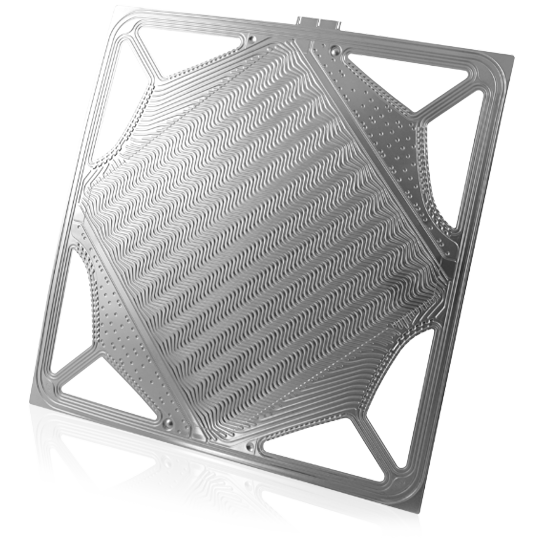
Our Services
Prototyping: Safety for your production projects
In our Graebener® production laboratory we are able to verify the manufacturability of your (bipolar) plate design using a selected area as test geometry - this way, you obtain initial results quickly and cost-effectively. This also applies to the design optimizations we work out.
For verification purposes, we work with our own especially developed machine concepts - consisting of Graebener® forming presses, Graebener® cutting machine, Graebener® welding machine and Graebener® straightening machine – which are ideally suited for a wide range of plate dimensions and materials from a foil thickness of 25 μm and which can realize the narrowest radii. Our machines are constantly being developed in view of growing market requirements and thus delivers tangible, high-quality results.
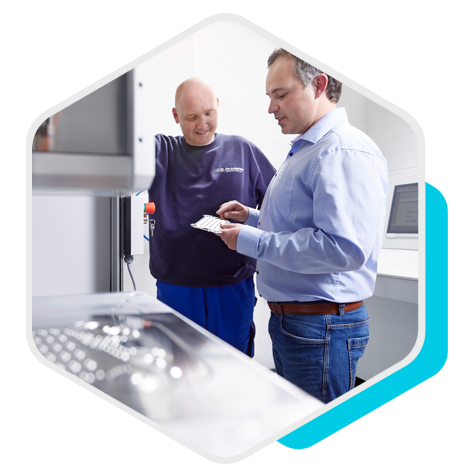

Small series production: Fast practical results
Before you take the next step and invest in your own Graebener® manufacturing technology, we would be pleased to support you in the production of your plate - from smallest lot sizes to small series with capacities of up to 50,000 parts per year.
If you intend to set up your own production in the future, the process parameters from our production laboratory can be transferred one-to-one to your own Graebener® lines.
From Test Geometry to Small Series WHAT we are able to process in the production laboratory and HOW: Possibilities, process steps and technical features
Material
Forming
Cutting
Welding
Straightening
Measuring/testing
Leak testing
Coating
Material
In the production of single and bipolar plates, the market generally focuses on stainless steel. We think in terms of material: In particular because, for instance, materials with a thickness of only 25 µm are used in electrolysis, or titanium is used as well, we provide a decisive added value with our material know-how. From knowledge about the behavior of different materials in the forming process to the evaluation of performance in processing – with our production laboratory we provide you with certainty in terms of materials for the production of your plates right from the start. No matter whether you want to process stainless steel, titanium, copper, clad or pre-coated materials.
Forming
Since there is still no product standard for single and bipolar plates, we remain flexible in terms of production right from the start. Together with you, we determine the limits of the geometries that can be formed in order to realize your design as precisely as possible. This also applies to the dimensions of your plates. Whether thinnest materials from 25 µm or plate sizes of up to 2,500 cm², we have the flexibility to react to your specifications by our Graebener® forming presses in our production laboratory. Furthermore, we realize a wide variety of test geometries in a vast range of sizes for you, in order to determine the possibilities of forming to their limits as well.
Cutting
The cut edges of the single resp. bipolar plates are used, among other things, as alignment elements in downstream processes and any deviation between the cutting contour and the formed channel structures can lead to problems during the operation of the fuel cell or electrolyzer. Further, the quality of the cutting edge has a significant influence on the quality of the final product. Therefore, special precision is required when cutting the plates. At our Graebener® cutting machine with laser fusion cutting we use a process that achieves this level of accuracy and quality. And this is achieved without significant maintenance costs or tolerance problems due to tool wear.
Welding
For welding the plates, we rely on our proven laser scanner technology. In this welding process, the welding optics are not moved mechanically, and thus time-consuming. Instead, the beam is directed to the respective welding spot via a mirror system. Due to the static structure of the laser, our Graebener® welding machine allows for extremely high speeds – and thus saves valuable time for you. At the same time, the smallest spot sizes of the laser beam ensure that we also weld reliably in the channel structures.
Straightening
In the production of metals and, further, during forming of the complex three-dimensional geometries of single and bipolar plates residual stresses are introduced. As a result, metallic plates always contain a certain residual stress despite all technological and process precision, which shows up in the form of warping. With our Graebener® straightening machine we are able to eliminate these residual stresses almost completely. Our technology is designed in such a way that the straightening process is contactless. Thus, it neither influences the surface and a possible coating nor the moulded geometry.
Measuring/testing
Precise measuring methods are decisive for evaluating the quality of a single or bipolar plate. The quality, however, is measured in the precision of the channel structures, wall thickness homogeneity, flat contact surfaces, clean cutting edges and pinpoint welds. By means of microsection preparation, we check these parameters – and can thus evaluate the quality and characteristics on a microscopic level.
Leak testing
The final inspection of each individual bipolar plate by means of leakage testing is essential for the functionality of a fuel cell system. Even a single leaking plate would lead to a failure of the stack and consequently of the entire system. Therefore, all plates manufactured in our production laboratory are subject to a 100% leakage test. In this process, compressed air is applied to the individual media areas of the welded bipolar plate in order to check them in terms of leak tightness.
Coating
Hydroforming is ideal for us as a forming process due to the fact that the pre-coating of the plates is not damaged by the absence of mechanical action. The quality remains unaffected since the forming process has no influence on the pre-coated materials. However, should you require a post-coating of the formed or even finally welded bipolar plate, our partner network is at your disposal for this purpose.
The Technologies for Optimum Performance
Forming
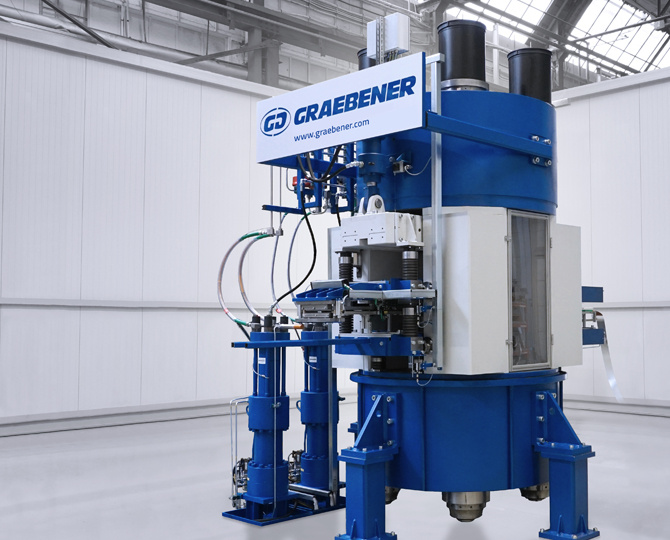
We have developed our Graebener® forming presses especially for the economic production of metallic plates and have made it ready for series production.
With our sandwich tool, several plates can effortlessly be produced simultaneously per stroke, e.g. the cathode and anode side.
Cutting

With laser fusion cutting, we use a process that achieves a very high level of accuracy and quality.
And this is achieved without significant maintenance costs or tolerance problems due to tool wear.
This ensures fitting accuracy even for complex structures.
Welding
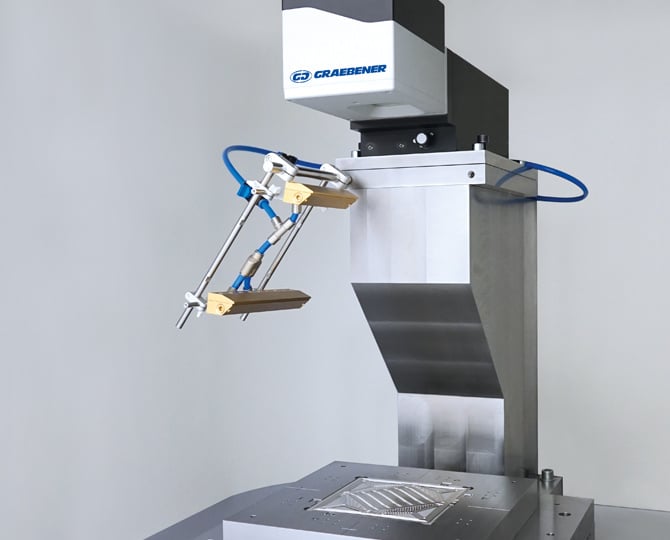
Not only do we form your bipolar plate for fuel cells and electrolyzers precisely. As an experienced technology and equipment partner, we are also at your side for the subsequent welding process.
As with cutting, we also use the advantages of laser technology here. Benefit from our many years of practical experience.
Straightening
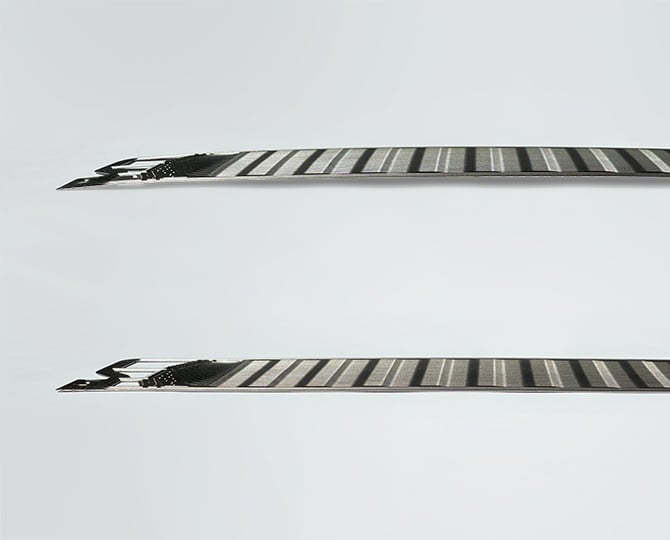
Our specially developed and worldwide unique straightening machine offers for the first time the possibility to produce flat plates.
A necessary requirement for both economical stack production as well as high performance and durability of the stacks.
